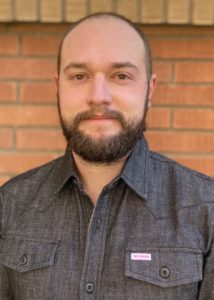Scenes from the Klondike Gold Rush National Historical Park
Two researchers from Colorado State University have been commissioned to conduct a two-year, $250,000 project chronicling the recent history of a national park in Alaska and Canada where the Klondike Gold Rush occurred in 1897-98.
The Klondike Gold Rush National Historical Park commemorates and interprets the last great gold rush in the West, preserving resources such as trails, historic structures, artifacts, landscapes and stories. The park also protects an equally rich ecosystem teeming with biodiversity. The resources cross state and international borders with sites in Skagway, Alaska; Seattle; the Chilkoot Trail into British Columbia, Canada; and multiple Parks Canada Historic Sites throughout British Columbia and the Yukon Territory.

The park has enlisted CSU historians to uncover and write the history of how these international resources came to be managed together as one park over the past three decades. They are Sarah Payne, an associate professor of history and director of research for Public Lands History Center, and Dillon Maxwell, who recently earned his master’s degree in history from CSU and is a research assistant in the Center for the Environmental Management of Military Lands. They will research and write an administrative history of the park from the 1990s to the present.
The project is the first of its kind to be awarded through a master agreement negotiated in 2019 among the National Park Service, PLHC and CEMML. The master agreement allows the CSU centers to perform additional projects of up to $250,000 each for the NPS.
About the gold rush
During the 1897-98 Klondike Gold Rush, tens of thousands of would-be miners endured a 600-mile journey on foot into the wilds of Alaska to hunt for gold in the Yukon’s mining fields. The park preserves structures as well as the rugged landscape and trails over which these people traveled, including the Chilkoot and White Pass trails.

Payne says she and Maxwell plan to conduct research at the park for several weeks in late spring/early summer of 2021, including a trip to the visitor’s center in Seattle that commemorates the starting point of the miners’ journey. Payne and Maxwell will interview park staff and others knowledgeable about the park to produce oral histories that capture the personal memories and experiences of those charged with managing the international preserve. They plan to write the administrative history during the second year of the grant, following their visit.
Administrative histories document every aspect of a park’s management, from staffing to resources to concessionaires. An administrative history of the park has not been conducted since the 1990s, when the National Park Service entered into an agreement with Parks Canada to jointly manage the preserved areas of the Klondike Gold Rush that span the Alaska/Canada border. The work is an important management tool that will help the park fulfill its mission of protecting its natural and cultural resources while also providing insights into the more recent stories the land has to offer.
Payne said the PLHC and CEMML have much in common because of their similar missions to preserve, document and facilitate the management of publicly owned lands.
“It’s like a natural marriage,” she said. “When you put the two centers together, with their expertise in archeology, consultation and history, we have all of the skills that the NPS was looking for.”
CEMML is based in CSU’s Warner College of Natural Resources, while the PLHC is part of the Department of History in the College of Liberal Arts.
Ariel Schnee and Dillon Maxwell contributed to this article.